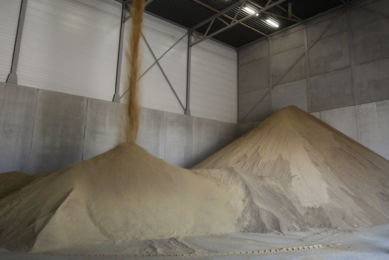What the textbooks don’t tell you about… Betaine
While the inclusion of this nutrient in some pig diets has been suggested for several years, hardly any pig textbooks seem to mention it. A funny old nutrient – betaine!
By John Gadd
So what is betaine?
Is it a vitamin? Not really, although it seems to spare the need for some of the fairly expensive ‘near-vitamin’, choline.
Is it an amino-acid? No, but it helps spare the amount needed of the increasingly costly sources of the essential amino-acid methionine.
Is it an energy source? Sort of – in a roundabout way. The original research showed that when grower (and developing gilt) diets were a bit light in energy, then a touch of betaine got the pigs growing significantly better but with rather less fat in the later stages. Technically this is still true today as it was ten years ago. Nutritionists tell me that it could be cheaper to design the diet to a higher energy level from normal ingredients than to spend €6-€8/tonne on supplementary betaine to do the same job. If energy costs climb upwards or modern high performance genetics demand more daily intake of energy in future, then added betaine used in this way could come back in again.
But that is not all. Further trials in Germany showed another significant advantage; betaine-supplemented diets for growing pigs improved performance even though the energy level was reduced.
Is it an anti-stress factor? Rather surprisingly it does seem to be – in three ways.
1. Water balance
First and basically, betaine helps considerably with the water balance within the pigs body (osmosis). Osmosis is the passage of a solvent – in this case water – across a membrane, such as is contained in a body cell. Therefore correct osmosis is important in the distribution and maintenance of adequate body fluids and thus helps ward off dehydration.
When do pigs get dehydrated? When the body does not get sufficient water, such as when it is hot; whenever diarrhoea sets in, especially post-weaning, and lastly during lactation.
Taking lactation – I’ve been rumbling on in a grumpy way for 20 years or more that breeders don’t allow the farrowed sow nearly enough water in lactation. If you persist in using bite drinkers in the farrowing crate instead of a valve or float-controlled six litre free-access water trough, then a touch of betaine in the lactation feed helps the lactating sow process the (usually inadequate) amount of water she gets from a bite drinker.
If a lactating sow is allowed to make more milk, she is less physically stressed. Her current litter does better and the sow is in better trim (hormonal trim as well as body-condition trim) once she enters the critical rebreeding phase. This has been quite dramatically borne out by two pieces of research work which show that subsequent litter size was significantly improved when betaine is added to the preceding lactation diet. This trial work will be discussed next month when I assess the economic benefit of supplementary betaine.
2. Ion pumps
The pig has to move water in and out of every cell, using what Dr Gary Partridge appropriately calls ‘ion pumps’. These ‘pumps’ need a lot of energy. Even when the pig is not dehydrated and can drink sufficient water, betaine helps in maintaining a correct balance of water and electrolytes in the body’s cells, making the pumps run efficiently, especially those lining the gut involved in the nutrient absorption process. Thus the energy spared can be directed towards growth and lean meat.
3. Sugar beet pulp
Betaine benefits also become clear when feeding sugar beet pulp (SBP). After the sugar has been extracted, the remaining pulp is rich in betaine. When wetted with water – i.e. eaten – the beet pulp swells in volume some fivefold, so a little (not too much) stops any hunger inadequacy. I’ve recommended this palatable but low nutrient-value food when the daily intake has to be restricted so as not to push selected replacement gilts on too fast before service. Also where (older/heavier) dry sows needed a low-nutrient anti-hunger ‘filler’ in mid-pregnancy when they are fed restricted amounts of a fairly low nutrient-density diet. I noticed that the gilts were calmer (satiety again?) but also seemed to perform better than replacements which had not had the pulp. Is this anything to do with extra betaine? I’ve a feeling that a betaine supplement could well be part of the ‘gilt developer’ diets now recommended, as SBP is not available everywhere.
More on energy saving
In Germany, Partridge has reported a trial across 30-120 kg liveweight where betaine extracted from sugar beet was used in diets with the same amino-acid levels but with 3 to 4% less energy and thus cheaper. Despite the lower energy intake, tolerable daily gains in the non-supplemented controls of 760 g/day rose to 785 g/day, a statistically significant improvement of 3%. There were no deleterious effects on other performance figures either – in fact all showed slight improvements, but they were not statistically significant.
So why not just use SBP alone as an extra source of betaine? Because with the sugar gone SBP becomes a low-nutrient ingredient and would take up far too much gut space in our high-performance growing pigs – in contrast to sows.
Is added betaine cost-effective – if so by how much?
Having seen almost no econometric figures on all the research on betaine supplementation so far, I will have a stab at it next month.











